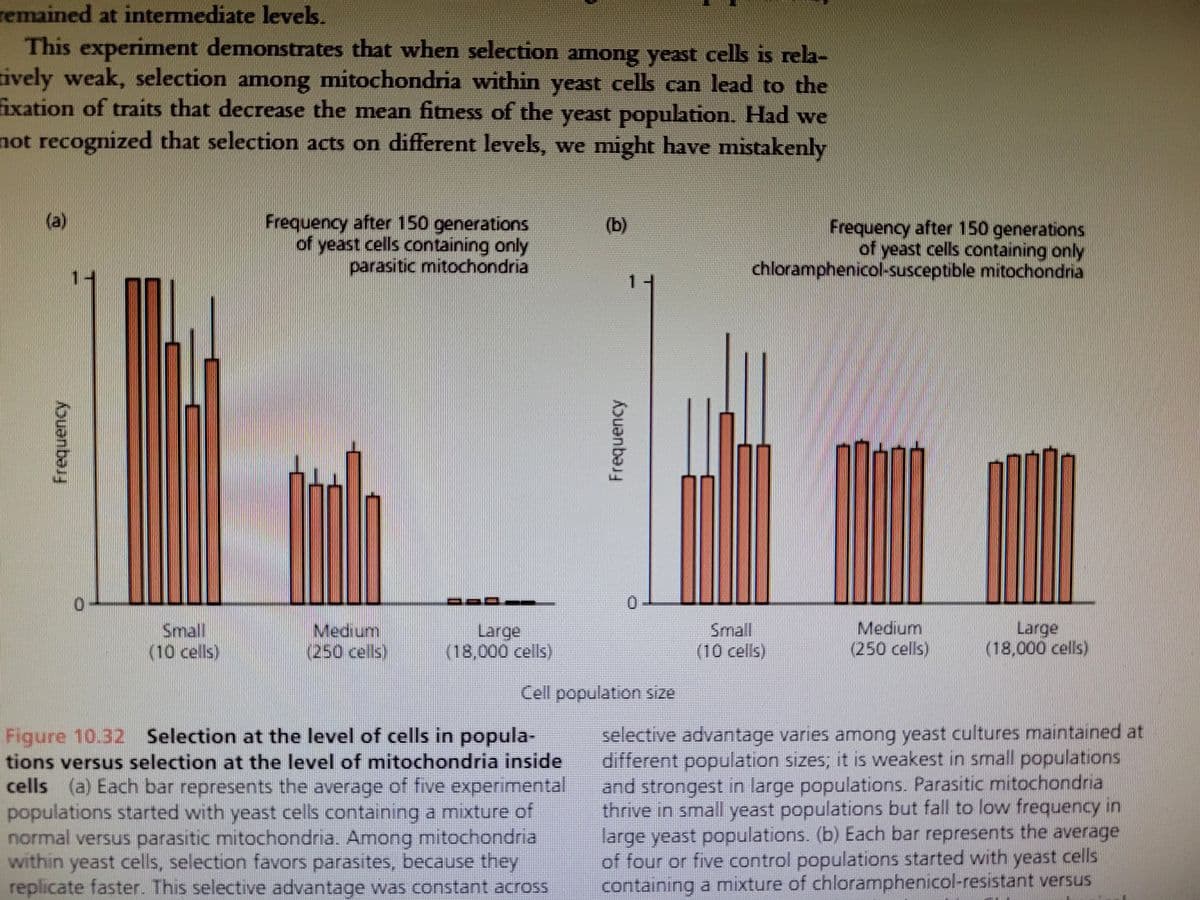Figure attached, you don't need any of the textbook words to figure out the answer so don't worry about the font size. A student in a course on intelligent design theory claims that the graph in part (a) shows that losing the ability to respire actually is adaptive for yeast cells living in small populations. Please read the incomplete sentence that appears immediately below, assess as possible completions the lowercase-Roman-numeral-labelled statements that follow, and click each uppercase-letter-labelled response that is presented below and completes accurately the sentence. An astute student in an evolution course would respond that i. the graph in part (a) shows that selection among mitochondria within yeast cells can lead to fixation for traits that decrease mean fitness for that yeast population. ii. the student in the course on intelligent design is wrong; the yeast cells in the small population group retained completely the ability to respire, as they otherwise would have been unable to harvest energy. iii. a property (e.g., inability to respire) that is maladaptive for individuals (e.g., unicellular organisms that are characterised by possessing the trait with that property) may be driven to fixation by selection operating at a different level (e.g., on organelles, like mitochondria).
Figure attached, you don't need any of the textbook words to figure out the answer so don't worry about the font size.
A student in a course on intelligent design theory claims that the graph in part (a) shows that losing the ability to respire actually is adaptive for yeast cells living in small populations. Please read the incomplete sentence that appears immediately below, assess as possible completions the lowercase-Roman-numeral-labelled statements that follow, and click each uppercase-letter-labelled response that is presented below and completes accurately the sentence.
An astute student in an evolution course would respond that
i. the graph in part (a) shows that selection among mitochondria within yeast cells can lead to fixation for traits that decrease mean fitness for that yeast population.
ii. the student in the course on intelligent design is wrong; the yeast cells in the small population group retained completely the ability to respire, as they otherwise would have been unable to harvest energy.
iii. a property (e.g., inability to respire) that is maladaptive for individuals (e.g., unicellular organisms that are characterised by possessing the trait with that property) may be driven to fixation by selection operating at a different level (e.g., on organelles, like mitochondria).
Question 7 options:
|
|
|
||
|
|
|
||
|
|
|
||
|
|
|
||
|
|
|

Step by step
Solved in 2 steps








